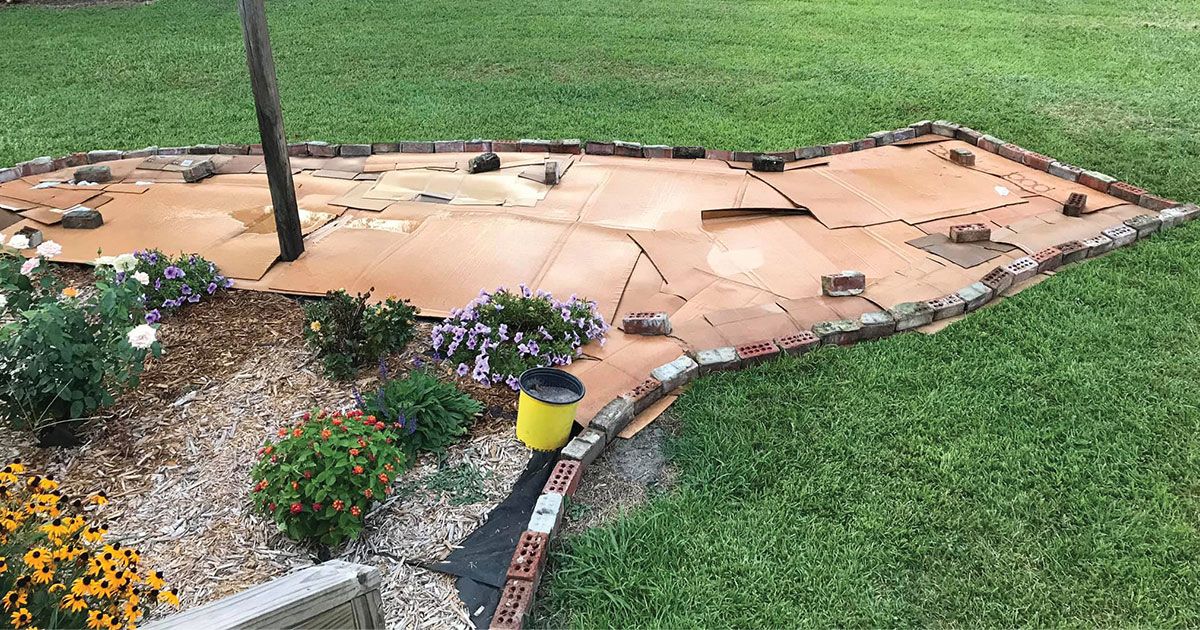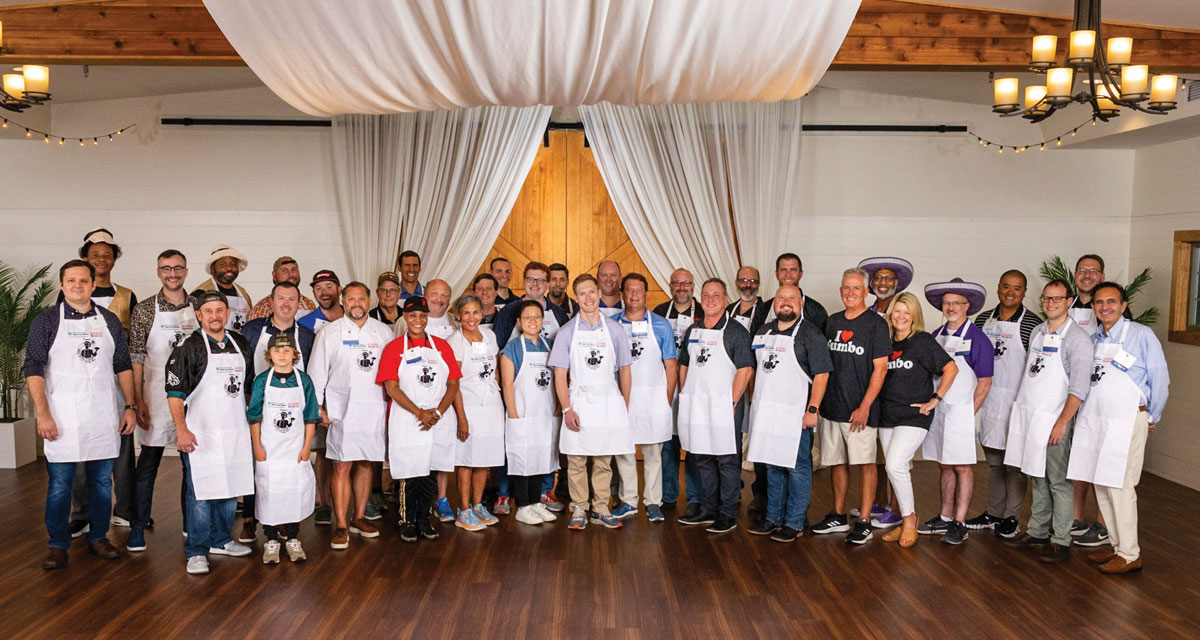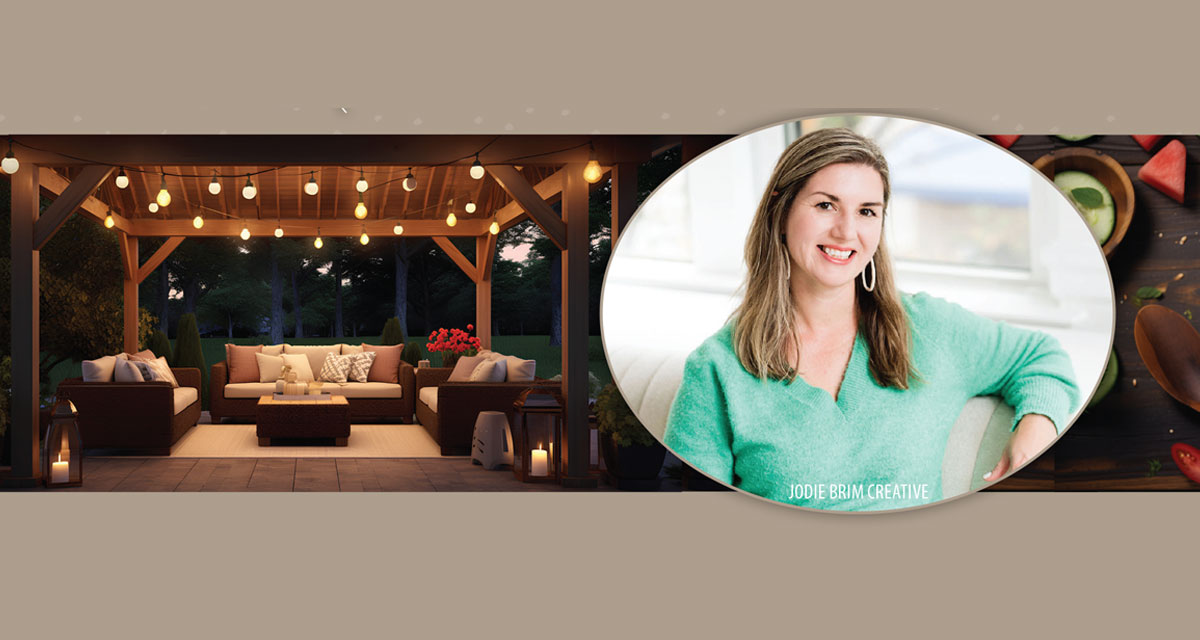A lush green lawn is the standard for American homescapes. While a grassy yard is nice in theory, it really serves very little practical purpose and can be expensive, labor-intensive, and downright toxic to maintain. Mowing equipment, gasoline, fertilizer, and herbicides for weeds aren’t cheap and contribute to air and water pollution while disrupting local ecosystems.
Planting native trees, shrubs, flowers, and groundcovers can enhance the beauty of your yard, provide year-round interest, save you money on maintenance costs, and provide a habitat for birds, pollinators, and other beneficial insects.
This does not mean that all of the grass has got to go—reducing the amount of grass by planting large garden beds also reduces costs and chemicals and can be done without digging.
Sheet Mulching
Sheet mulching allows you to smother large sections of grass while enriching the soil. Laying down a thick, overlapping layer of paper or cardboard blocks sunlight and traps moisture, effectively killing the underlying grass and leaving it to rot in place right down to its roots.
As the paper and cardboard decompose, earthworms and burrowing insects will migrate to your sheet mulching site. Their activities serve to aerate and enrich the soil, making your future use of fertilizers much less necessary.
A layer of newspaper 6-8 sheets thick or standard corrugated cardboard makes an effective base layer. Overlap edges of paper or cardboard by at least two inches and make sure that there is absolutely no grass showing through anywhere. Tip: Skip the small boxes—they require so much overlapping of flaps that it takes more time and boxes than is necessary.
Smothering can take several weeks to several months, depending primarily on the amount of moisture. A faster smother and decomposition of your base layer requires more moisture, so you need to soak the site regularly with a hose when it begins to dry out. Tip: Saturating the ground before laying your base layer also speeds the process.
Once your base layer is in place, you have two options:
- Let the layer sit until the grass is dead and rotted, remove the cardboard and plant, or seed the area with flowers and shrubs of your choice. This may require you to weigh the layer down with bricks or other heavy objects to prevent it from blowing away. It’s unsightly but temporary.
- Cover the layer with at least two inches of compost and/or topsoil. If you want to plant or sow seeds right away, mix compost with topsoil in a 1:1 ratio to provide nutrients without burning the roots of your plants. If you don’t plan to plant for several months but want to begin the smothering process, a two-inch layer of compost will serve to enrich the soil even more while covering the unsightly base layer.
Finding Materials
Using paper and cardboard for sheet mulching is a great way to reuse the materials. Finding them in bulk is not difficult, but be prepared for a few skeptical looks when you ask for something that others consider trash. Explain your garden project, and you’ll usually find someone willing to help.
- Contact your local newspaper and ask for papers that are slated for recycling. Newspapers always wind up with extra copies and are usually happy to provide old issues.
- Get large pieces of cardboard from appliance stores and big box stores. Many stores bale cardboard into massive blocks for recycling, so you’ll need to talk to a manager to schedule a time to pick up boxes before they are baled, and when it won’t interfere with their regular schedule. Be sure to specify that you want large boxes.
- Buy compost and topsoil in bulk. Skip the bagged options that hardware stores and small garden shops offer. You’ll save money and plastic. Find a local mulch yard and purchase by the cubic yard. If you don’t have a truck or trailer, you’ll still save money even if you have it delivered. Tip: Use an online soil calculator to determine the volume of compost/topsoil you will need based on the dimensions of your garden bed.
When you’re ready to plant, punch through your base layer and make sure to re-cover the area with your base material to within 2-3 inches of your plant to prevent the grass from creeping back in. Or, sow wildflower weeds and skip all of the digging!
You have a blank canvas. Grow something beautiful.





















